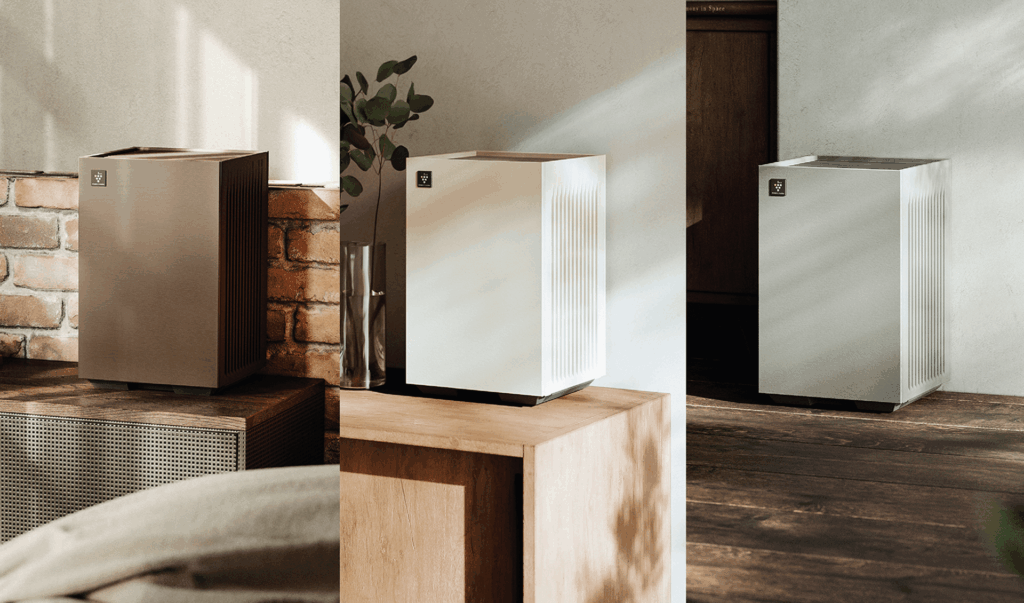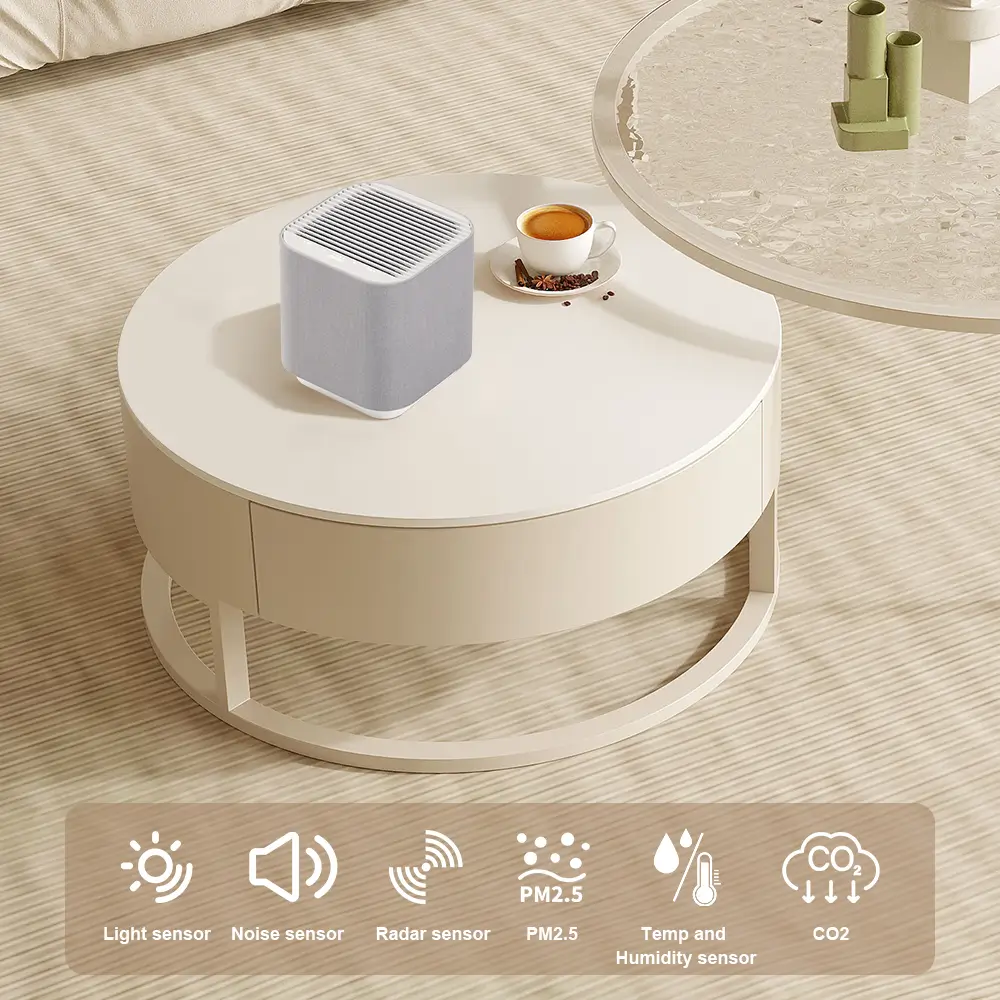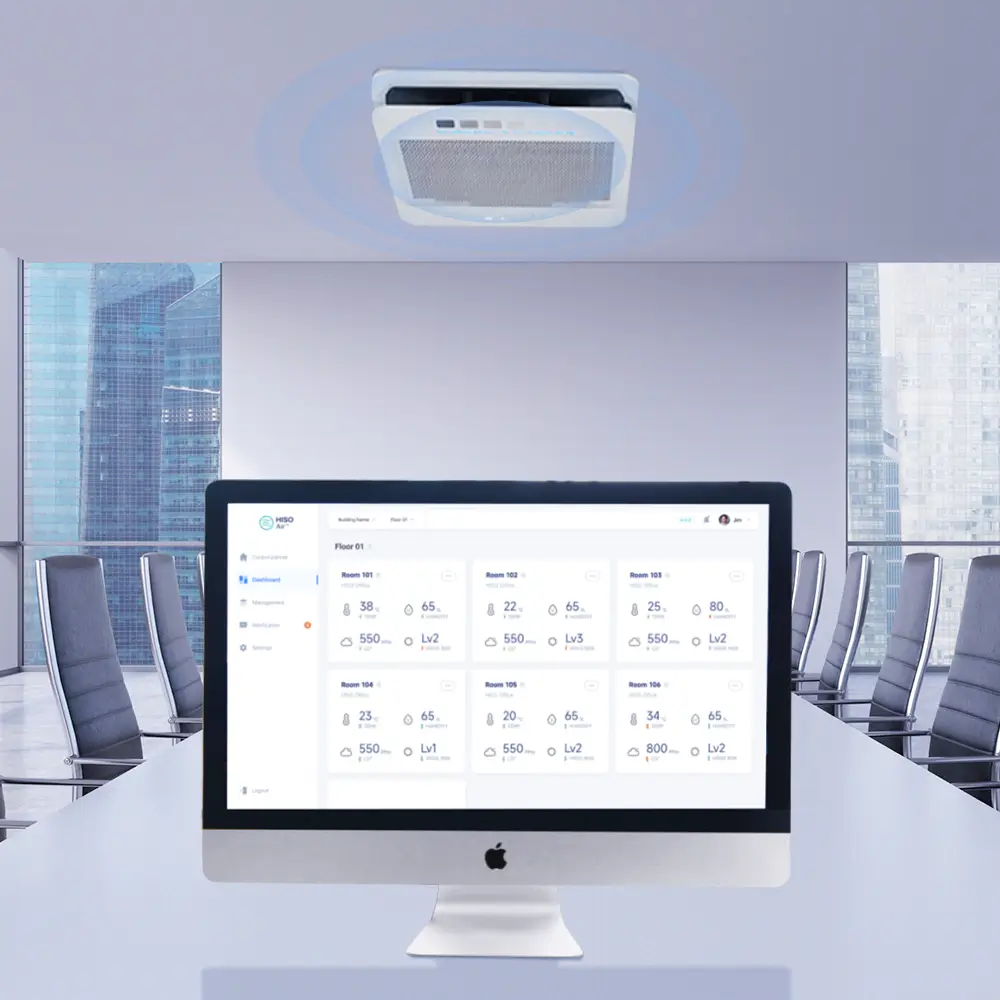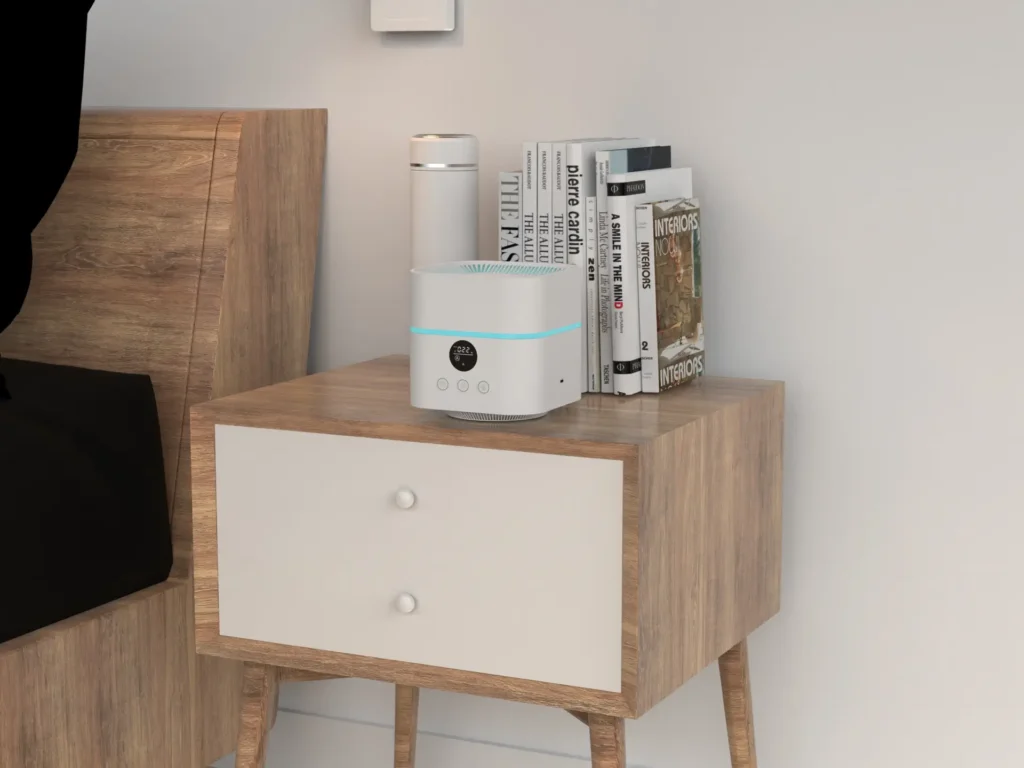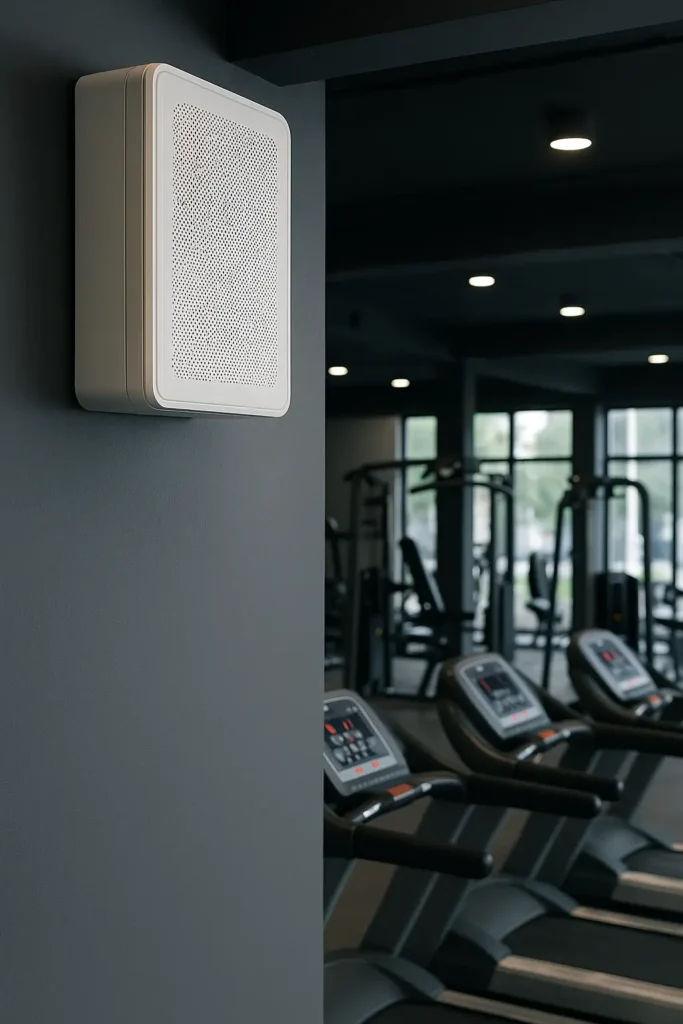
Haben Sie schon einmal an der Kreuzung zwischen der Entwicklung oder Herstellung von Luftreinigern gestanden und sich gefragt, wie lange die OEM/ODM Reise dauert?
Die OEM/ODM Prozess für Luftreiniger dauert in der Regel zwischen 3 und 6 Monaten. Dieser Zeitrahmen hängt von der Komplexität des Entwurfs, dem Fachwissen des Partners und der effektiven Kommunikation ab. Zu den wichtigsten Phasen gehören Design, Prototyping, Tests und Produktionsmanagement.
Dieser Überblick bietet zwar einen grundlegenden Zeitplan, doch ist es für die Rationalisierung von Prozessen und die Vermeidung von Verzögerungen entscheidend, die einzelnen Phasen im Detail zu verstehen. In den folgenden Abschnitten erhalten Sie tiefere Einblicke in die Optimierung des Zeitplans für die Entwicklung und Herstellung Ihres Luftreinigers.
Der OEM/ODM-Prozess für Luftreiniger dauert 3-6 Monate.Wahr
Der Zeitrahmen hängt von der Komplexität des Entwurfs und der Kompetenz des Partners ab.
Wie funktioniert die OEM Prozess unterscheiden sich von der ODM Prozess?
Navigieren in der OEM und ODM Prozesse können komplex sein, insbesondere bei der Herstellung von Luftreinigern. Das Verständnis der Unterschiede ist der Schlüssel zum Erfolg.
Die OEM (Original Equipment Manufacturer) die Herstellung von Produkten auf der Grundlage der Spezifikationen eines Kunden, während der ODM (Original Design Manufacturer) bietet Design- und Fertigungsdienstleistungen für Produkte, die vom Hersteller konzipiert wurden. Die Wahl zwischen OEM und ODM hängt vom gewünschten Grad der Kontrolle über Design und Produktion ab.
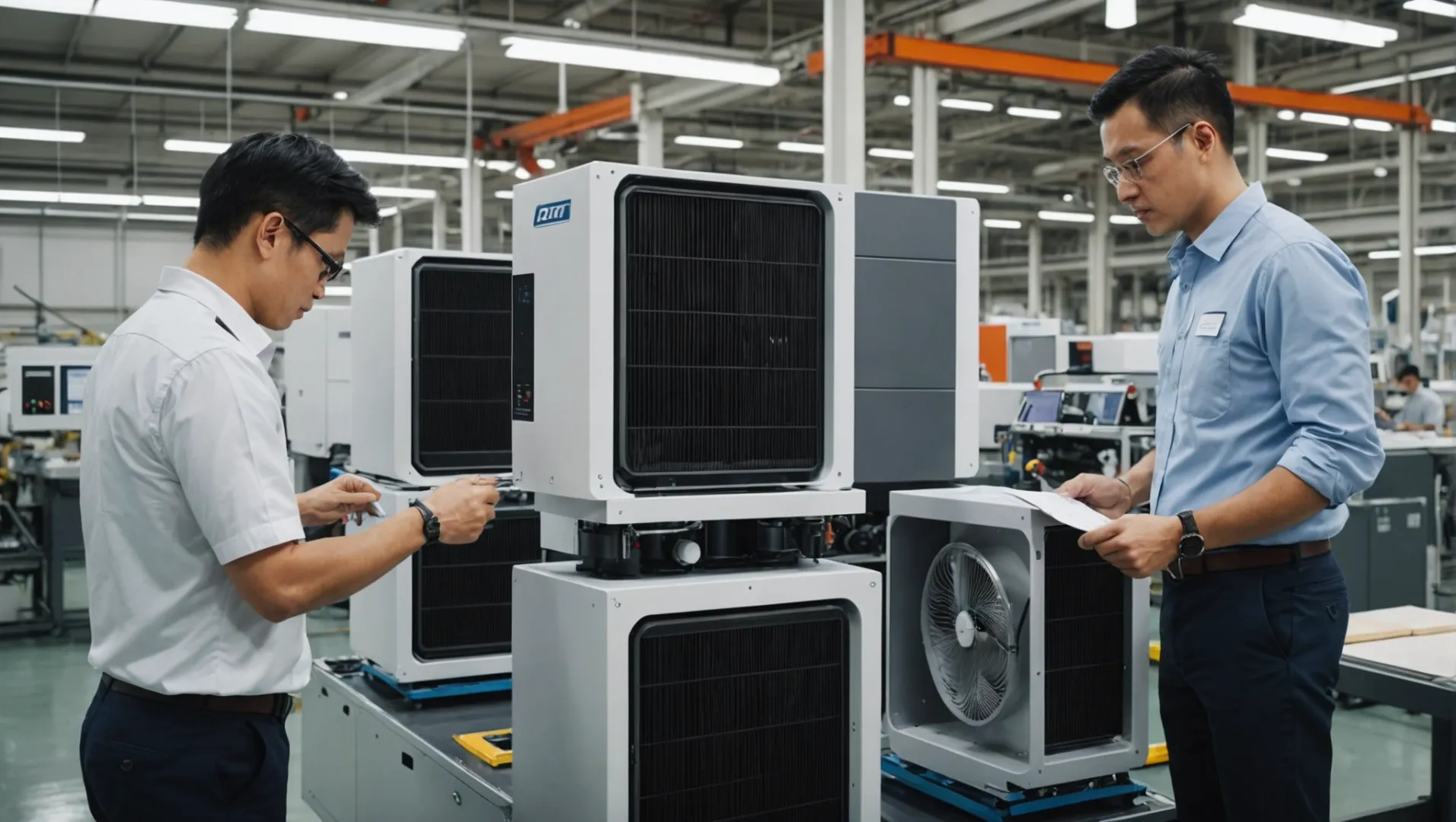
Verstehen OEM: Original Equipment Manufacturing
Die OEM Prozess1 wird häufig von Unternehmen bevorzugt, die ein bestimmtes Produktdesign haben, aber nicht über die Fähigkeit oder die Ressourcen verfügen, es selbst herzustellen. Der Hauptvorteil dieses Ansatzes besteht darin, dass die Unternehmen die vollständige Kontrolle über das Design und die Spezifikationen ihres Produkts behalten.
- Kontrolle über das Design: OEM Die Kunden stellen detaillierte Spezifikationen zur Verfügung, um sicherzustellen, dass ihre Visionen ohne Änderungen umgesetzt werden.
- Anpassungen: Die Produkte werden auf die Anforderungen des Kunden zugeschnitten, ideal für Unternehmen mit einzigartigen Produktanforderungen.
- Marke im Fokus: Die Marke des Kunden steht im Vordergrund, was für Unternehmen mit einer starken Markenidentität unerlässlich ist.
Beispielszenario: Ein Unternehmen entwickelt einen innovativen Luftreiniger mit eigener Technologie und geht eine Partnerschaft mit einem OEM um es herzustellen und Qualität und Markenintegrität zu gewährleisten.
Erkundung von ODM: Original Design Manufacturing
Auf der anderen Seite ist die ODM Prozess2 eignet sich für Unternehmen, die kein spezifisches Produktdesign haben und nach umfassenden Lösungen suchen, einschließlich Produktdesign und -herstellung.
- Design-Kompetenz: ODMs bieten Designdienstleistungen an, indem sie bereits existierende Designs anbieten oder gemeinsam an neuen Designs arbeiten.
- Schnelle Markteinführung: Da die Entwürfe oft schon fertig sind, können die Produkte schneller auf den Markt kommen als bei OEM.
- Kosteneffizienz: Durch die Verwendung eines ODM kann kosteneffizient sein, da die Entwurfskosten auf mehrere Kunden verteilt werden.
Beispielszenario: Ein Startup möchte schnell in den Markt für Luftreiniger einsteigen und wählt eine ODM mit einem bewährten Design, das auf die Ästhetik ihrer Marke abgestimmt ist.
Die wichtigsten Unterschiede auf einen Blick
| Merkmal | OEM | ODM |
|---|---|---|
| Kontrolle über das Design | Hoch | Mittel bis niedrig |
| Anpassungsgrad | Vollständig | Begrenzt |
| Schnelle Markteinführung | Variabel | Typischerweise Schneller |
| Kosten | Höhere Anfangsinvestition | Im Allgemeinen niedriger |
Auswahl zwischen OEM und ODM
Die Entscheidung zwischen OEM und ODM hängt von Ihren Geschäftszielen, Ihrem Budget und dem Grad der erforderlichen Anpassung ab. Wenn die Kontrolle über jedes Detail entscheidend ist, OEM ist wahrscheinlich die bessere Wahl. Wenn jedoch die Zeit bis zur Markteinführung und die Kosten wichtige Faktoren sind, unter Berücksichtigung einer ODM3 könnte von Vorteil sein.
Regelmäßige Kommunikation und Projektmanagement sind in beiden Prozessen von entscheidender Bedeutung. Wöchentliche Besprechungen und Betriebsbesichtigungen können Einblicke in den Produktionsfortschritt und mögliche Herausforderungen geben.
OEM bietet volle Kontrolle über das Produktdesign.Wahr
OEM ermöglicht es den Kunden, jedes Detail des Produkts zu spezifizieren.
ODM ist in der Regel langsamer auf dem Markt als OEM.Falsch
ODM verwendet oft vorgefertigte Designs, was den Markteintritt beschleunigt.
Was sind die wichtigsten Etappen bei der Produktentwicklung von Luftreinigern?
Der Einstieg in die Produktentwicklung von Luftreinigern erfordert ein klares Verständnis der wesentlichen Phasen.
Zu den wichtigsten Phasen der Produktentwicklung von Luftreinigern gehören Konzeptdesign, Prototyping, Leistungstests, Validierung und Produktionsplanung. Jede Phase spielt eine entscheidende Rolle, um sicherzustellen, dass das Endprodukt den Qualitätsstandards und den Marktanforderungen entspricht.
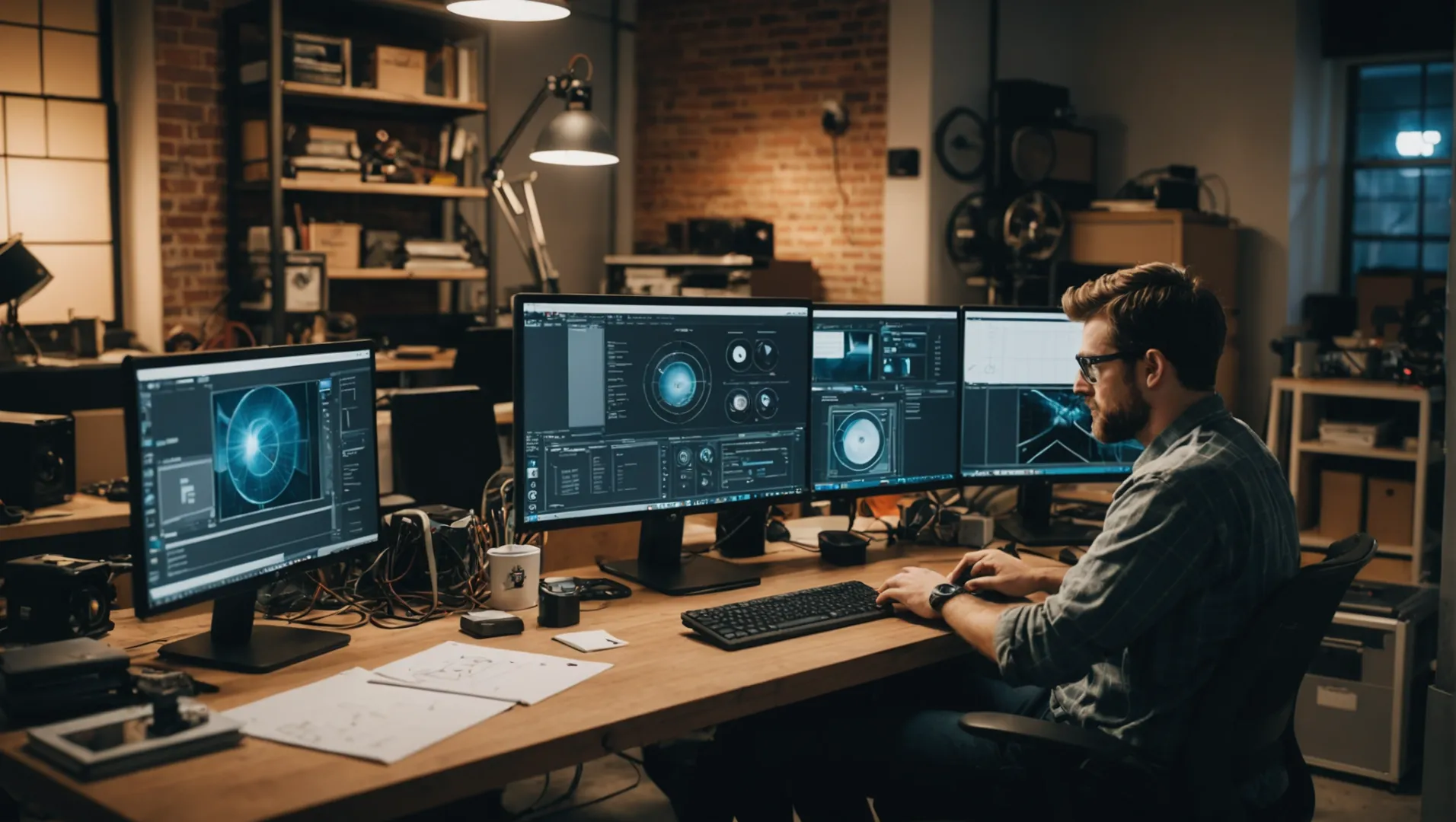
Konzeptentwurf und Ideenfindung
In der Anfangsphase wird ein Brainstorming durchgeführt und ein konzeptioneller Rahmen für den Luftreiniger entwickelt. Dazu gehören die Definition der Zielgruppe, die Ermittlung von Alleinstellungsmerkmalen und die Festlegung der technischen Spezifikationen. Die Zusammenarbeit mit erfahrenen Designern und Ingenieuren kann den Ideenfindungsprozess erheblich verbessern und sicherstellen, dass innovative Konzepte sowohl praktisch als auch machbar sind.
Prototyping
Sobald ein solides Konzept feststeht, besteht der nächste Schritt darin, einen Prototyp zu erstellen. Diese greifbare Darstellung ermöglicht es den Entwicklern, die Praktikabilität und Funktionalität des Entwurfs zu beurteilen. Bei der Erstellung von Prototypen sollten Sie funktionsübergreifende Teams einbeziehen, um verschiedene Aspekte wie Benutzerfreundlichkeit, Ästhetik und Haltbarkeit zu bewerten. Iterative Tests und Feedback in dieser Phase können das Design verfeinern, bevor es weiterentwickelt wird.
Leistungsprüfung
Leistungstests sind unerlässlich, um sicherzustellen, dass der Luftreiniger die gesetzlichen Normen und die Erwartungen der Kunden erfüllt. Die frühzeitige Durchführung von Labortests hilft, potenzielle Probleme zu erkennen, die später zu Leistungsmängeln führen könnten. Wenn Sie in umfassende Prüfprotokolle investieren, können Sie langfristig Zeit und Ressourcen sparen und kostspielige Umgestaltungen oder Rückrufe vermeiden.
Verstehen der rechtlichen Anforderungen4 ist in dieser Phase ebenfalls entscheidend, um die Einhaltung der Industrienormen zu gewährleisten.
Validierung und Iteration
Nach den ersten Tests ist eine weitere Validierung zur Feinabstimmung des Entwurfs erforderlich. Dazu gehört das Einholen von Nutzerfeedback, die Durchführung von Umweltverträglichkeitsprüfungen und die Bewertung der Energieeffizienz. Der iterative Prozess stellt sicher, dass alle ermittelten Probleme angegangen werden, bevor die Massenproduktion beginnt.
Planung der Produktion
Die letzte Phase umfasst die detaillierte Planung der Produktion. Dazu gehören die Festlegung von Zeitplänen, die Beschaffung von Materialien und die Organisation eines Projektmanagementteams zur Überwachung der Fortschritte. Regelmäßige Besprechungen mit den Beteiligten können dazu beitragen, die Abstimmung aufrechtzuerhalten und aufkommende Probleme umgehend anzugehen.
Erforschung effizienter Produktionsstrategien5 kann für die Optimierung von Fertigungsprozessen von Nutzen sein.
Die Kenntnis dieser Phasen ermöglicht es Unternehmen, ihren Entwicklungszyklus strategisch zu planen und sowohl die Produktqualität als auch die Markteinführungszeit zu verbessern.
Die Entwicklung von Prototypen ist der erste Schritt in der Entwicklung von Luftreinigern.Falsch
In der Produktentwicklung geht das Konzeptdesign dem Prototyping voraus.
Leistungstests gewährleisten die Einhaltung von Industriestandards.Wahr
Durch die Prüfung wird sichergestellt, dass das Produkt den gesetzlichen Vorschriften und den Erwartungen der Kunden entspricht.
Wie können Sie den Herstellungsprozess von Luftreinigern beschleunigen?
Um die Herstellung von Luftreinigern zu beschleunigen, sind eine strategische Planung und eine effiziente Ausführung in jeder Phase erforderlich.
Um die Herstellung von Luftreinigern zu beschleunigen, sollten Sie sich auf die Auswahl erfahrener Partner, die Rationalisierung der Kommunikation, strenge Tests in der Frühphase und ein effektives Projektmanagement konzentrieren.
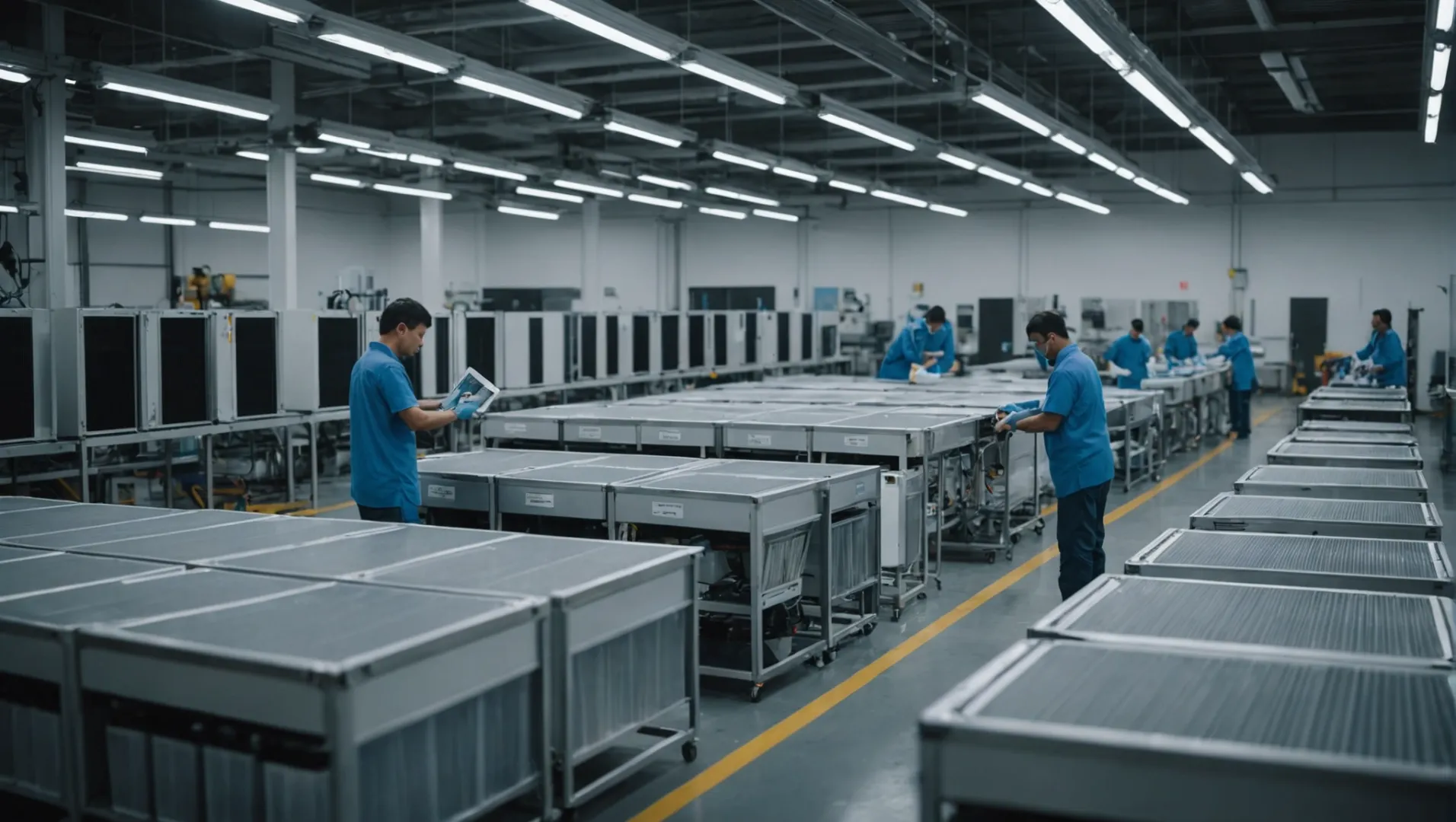
Partner mit erfahrenen Herstellern
Die Wahl eines Herstellers mit umfassender Erfahrung in Original Design Fertigung6 (ODM) oder Herstellung von Originalausrüstung7 (OEM) können die Zeit erheblich verkürzen. Ein erfahrener Partner verfügt über etablierte Protokolle, was die Lernkurve und das Fehlerpotenzial verringert.
Kommunikation rationalisieren
Kommunikationskosten können einen Engpass darstellen. Legen Sie klare Kommunikationskanäle und Zeitpläne fest. Wöchentliche Besprechungen sind für die Abstimmung der Ziele und die Aktualisierung der Fortschritte von entscheidender Bedeutung. Ziehen Sie den Einsatz von Projektmanagement-Tools in Betracht, um den Informationsfluss zu erleichtern und sicherzustellen, dass alle Beteiligten auf dem gleichen Stand sind.
Strenge Tests in der Frühphase durchführen
Eine frühzeitige Leistungsvalidierung durch Labortests kann zukünftige Verzögerungen verhindern. Das frühzeitige Erkennen von Konstruktionsfehlern hilft, Ausfälle während der Produktionsläufe zu vermeiden. Wer von Anfang an in gründliche Tests investiert, spart Zeit und Ressourcen, da er sicherstellt, dass das Produkt die erforderlichen Standards erfüllt.
Effektives Projektmanagement
Ein engagiertes Projektmanagementteam ist unerlässlich. Es sollte den Zeitplan überwachen, die Ressourcen verwalten und mögliche Verzögerungen vorhersehen. Die Einführung eines Projektmanagement-Rahmen8 trägt zur Aufrechterhaltung der Effizienz und Koordination im gesamten Fertigungsprozess bei.
Regelmäßige Werksbesichtigungen durchführen
Regelmäßige Werksbesichtigungen stellen sicher, dass der Herstellungsprozess mit den Designvorgaben übereinstimmt. Sie bieten die Möglichkeit, etwaige Ineffizienzen in der Produktion zu erkennen und in Echtzeit Anpassungen vorzunehmen.
| Bühne | Schlüsselaktion |
|---|---|
| Auswahl der Partner | Wählen Sie erfahrene Partner |
| Kommunikation | Aufstellung klarer Zeitpläne und Instrumente |
| Prüfung | Frühzeitige Validierung durch rigorose Tests |
| Verwaltung | Implementierung von Projektmanagement-Rahmenwerken |
| Fabrik-Touren | Regelmäßige Kontrollen der Effizienz |
Erfahrene Hersteller verkürzen die Produktionszeit.Wahr
Sie haben Protokolle erstellt, die Fehler und Verzögerungen auf ein Minimum reduzieren.
Wöchentliche Besprechungen verlangsamen die Fertigungsprozesse.Falsch
Regelmäßige Treffen dienen der Abstimmung von Zielen und der Aktualisierung von Fortschritten und steigern die Effizienz.
Warum sind Leistungstests in der frühen Entwicklungsphase so wichtig?
Entdecken Sie, warum Leistungstests in der frühen Produktentwicklung über Erfolg oder Misserfolg entscheiden können.
Leistungstests in der frühen Entwicklungsphase helfen dabei, potenzielle Probleme zu erkennen und zu beheben, um die Zuverlässigkeit und Effizienz des Produkts zu gewährleisten. Durch die frühzeitige Durchführung von Tests können die Entwickler Zeit und Ressourcen sparen, indem sie Probleme vor der Massenproduktion beheben, was letztlich zu einer erfolgreichen Markteinführung führt.
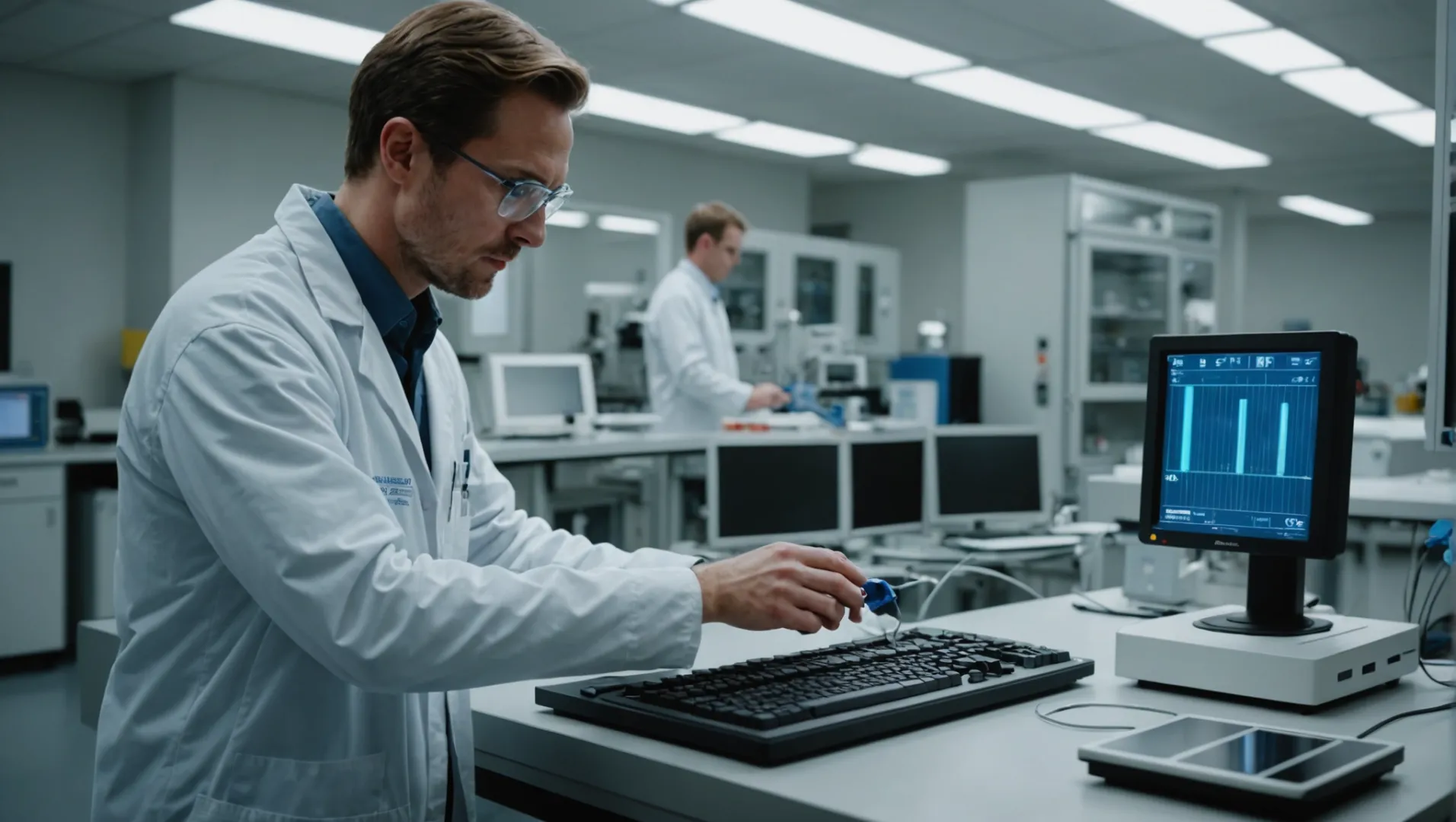
Die Rolle von Leistungstests für den Produkterfolg
In der wettbewerbsorientierten Welt der Produktentwicklung, insbesondere bei Luftreinigern, ist es unverzichtbar, dass Ihr Produkt die erwarteten Leistungsstandards erfüllt. Leistungstests sind ein entscheidender Schritt, um zu überprüfen, ob das Produkt unter den erwarteten Bedingungen fehlerfrei funktioniert. Dies ist besonders wichtig für Luftreiniger, die eine hohe Effizienz bei der Filterung von Luftschadstoffen aufweisen müssen.
Verhinderung kostspieliger Ausfälle
Die frühzeitige Erkennung potenzieller Probleme in der Entwicklungsphase kann erhebliche Kosten sparen. Wenn zum Beispiel ein Leistungsmangel während der Entwicklung entdeckt wird spätere Stufen9 der Produktion oder nach der Markteinführung kann dies zu teuren Rückrufaktionen oder Rufschädigung führen. Frühzeitige Tests ermöglichen es den Entwicklern, das Design oder die Materialien zu optimieren, um Probleme zu beheben, ohne den Produktionsplan zu unterbrechen.
Verbesserung der Produktzuverlässigkeit
Zuverlässigkeit ist ein wichtiges Verkaufsargument für Verbraucher, die von ihren Luftreinigern erwarten, dass sie einwandfrei funktionieren. Leistungstests tragen dazu bei, sicherzustellen, dass die Produkte im Laufe der Zeit verschiedenen Betriebsbedingungen standhalten können. Dabei werden umfangreiche Tests durchgeführt, die reale Nutzungsszenarien simulieren, um Haltbarkeit und Effizienz zu prüfen.
Straffung der ODM Prozess
Für diejenigen, die sich mit OEM/ODM Prozesse sind Leistungstests ein wesentlicher Bestandteil einer effektiven Kommunikation mit Partnern. Sie liefern klare Daten und Erkenntnisse, die dazu beitragen, die Erwartungen abzustimmen und sicherzustellen, dass alle Parteien auf ein gemeinsames Ziel hinarbeiten. Durch den frühzeitigen Austausch von Testergebnissen können die Beteiligten effektiver an notwendigen Anpassungen arbeiten.
Bewährte Praktiken für frühzeitige Leistungstests
- Setzen Sie klare Ziele: Bestimmen Sie, welche spezifischen Leistungsaspekte für Ihr Produkt am wichtigsten sind.
- Investieren Sie in hochwertige Ausrüstung: Verwenden Sie fortschrittliche Testwerkzeuge, um präzise Daten zu erhalten.
- Experten einbeziehen: Arbeiten Sie mit erfahrenen Ingenieuren und Technikern zusammen, um gründliche Bewertungen durchzuführen.
- Führen Sie regelmäßige Überprüfungen durch: Planen Sie während der Entwicklungsphase regelmäßige Bewertungen ein, um den Fortschritt zu verfolgen und rechtzeitig Änderungen vorzunehmen.
Die Einbeziehung dieser Praktiken in Ihre Entwicklungsstrategie erhöht nicht nur die Wahrscheinlichkeit einer erfolgreichen Markteinführung, sondern schafft auch Vertrauen bei den Verbrauchern, die auf zuverlässige und effiziente Luftreinigungslösungen angewiesen sind.
Frühzeitige Leistungstests senken die Produktionskosten.Wahr
Die frühzeitige Erkennung von Problemen verhindert kostspielige Rückrufe und Umgestaltungen.
Leistungsprüfungen sind bei Luftreinigern nicht erforderlich.Falsch
Die Tests gewährleisten, dass die Luftreiniger effizient und zuverlässig arbeiten.
Schlussfolgerung
Sorgfältige Planung und strategische Partnerschaften sind der Schlüssel zur erfolgreichen Produktion von Luftreinigern. Nutzen Sie die Erkenntnisse von Experten, um Effizienz und Innovation zu steigern. Beginnen Sie heute, um wettbewerbsfähig zu bleiben.
-
Erfahren Sie, wie OEM die Kontrolle des Produktdesigns sicherstellen..: Ein Erstausrüster (Original Equipment Manufacturer, OEM) liefert Komponenten für das Produkt eines anderen Unternehmens und arbeitet eng mit dem Verkäufer des Endprodukts zusammen. ↩
-
Entdecken Sie, wie ODM Design- und Fertigungslösungen anbietet..: Der ODM-Partner entwirft und entwickelt dann das Produkt unter Berücksichtigung aller wesentlichen Kundenbedürfnisse und -präferenzen. ↩
-
Entdecken Sie die Faktoren, die bei der Wahl zwischen OEM und ODM zu beachten sind: OEM steht für Original Equipment Manufacturer (Originalausrüstungshersteller) und ODM für Original Design Manufacturer (Originalentwicklungshersteller). Hier erfahren Sie, was die beiden Begriffe bedeuten. ↩
-
Verstehen Sie die Konformitätsstandards, um sicherzustellen, dass das Produkt die Branchenvorschriften erfüllt..: Alle Luftreinigermodelle, die nach dem 18. Oktober 2010 in Kalifornien vermarktet oder verkauft wurden, mussten gemäß der Verordnung getestet und zertifiziert werden. Dies schloss Luft ... ↩
-
Lernen Sie Methoden zur Optimierung Ihrer Fertigungsprozesse für mehr Effizienz: Um die Effizienz einer Produktionsanlage zu steigern, ist es wichtig, sich auf die Rationalisierung von Arbeitsabläufen, den Einsatz von Spitzentechnologie und die Reduzierung von Abfall zu konzentrieren. ↩
-
Erfahren Sie, warum die Wahl des richtigen Herstellers so wichtig ist: OEM steht für Original Equipment Manufacturer (Originalausrüstungshersteller) und ODM für Original Design Manufacturer (Originalentwicklungshersteller). Hier erfahren Sie, was die beiden Begriffe bedeuten. ↩
-
Verstehen, wie OEM-Prozesse die Produktionsgeschwindigkeit beeinflussen können..: OEMs und ihre Auftragsfertiger (CMs) müssen acht Schritte befolgen, um ein wettbewerbsfähiges Produkt zu entwerfen und zu fertigen, unabhängig von ... ↩
-
Entdecken Sie Tools zur Optimierung des Projektmanagements in der Fertigung: 10 beste Projektmanagement-Software für die Fertigung Shortlist - 1. MRPeasy - Am besten geeignet für die MRP-Bedürfnisse kleiner Hersteller' - 2. Zoho Projects - Beste ... ↩
-
Verstehen Sie, wie frühzeitige Tests Risiken minimieren und die Produktzuverlässigkeit verbessern..: Ein besseres Verständnis des Systemverhaltens in Verbindung mit einer schnelleren Identifizierung der Problempunkte ermöglicht uns eine schnellere und genauere Prognose ... ↩


